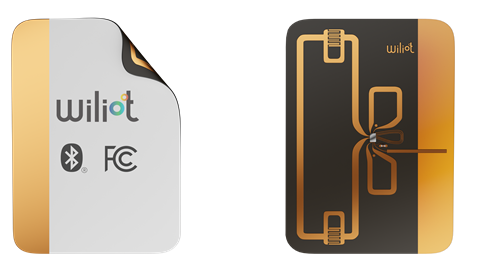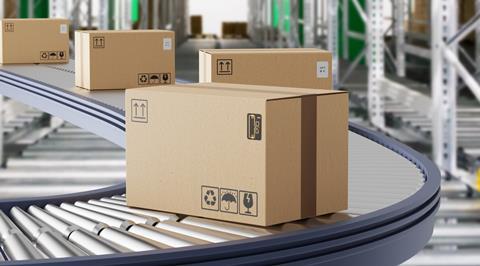
Ahead of the Sustainability Awards taking place this month, we spoke to finalist Wiliot about its Internet of Things (IoT) platform for the supply chain, nominated in the commercialized Active & Intelligent category.
You’re a finalist in the Sustainability Awards 2023. Congratulations! To start off, could you summarise your entry, in less than 50 words?
Wiliot’s Ambient IoT Visibility Platform connects the digital and physical worlds using IoT Pixels – stamp-sized, self-powered computing devices – enabling products and packaging to transmit item-level information about their location, temperature, humidity, and carbon footprint. This equips businesses with the real-time data needed to make sustainably-minded decisions to reduce carbon footprint.
Why do you think the judges were impressed with your entry? Tell us about what is innovative about your project and/or about its impact on packaging sustainability.
The Wiliot Ambient IoT Visibility Platform, powered by Wiliot IoT Pixels delivers real-time carbon footprint measurements which is a unique and useful tool for the sustainable packaging industry. The IoT Pixels can be attached to any packaging to connect it to the internet, ensuring down-to-the-minute tracking of anything in our supply chains including shipping containers, fruits, veggies, vaccine vials, clothes, crates, and just about everything else.
Daily carbon footprint measurements of these items in real-time is only made possible thanks to the latest smart tag technology, the development of which has sprung from a market that is led by the Active & Intelligent Packaging Industry Association (AIPIA).
The ability of the Wiliot Visibility Platform and Wiliot IoT Pixels to make carbon footprint an operational metric has the potential to drive change in the sustainable packaging industry much faster than current systems of annual or quarterly backward-looking assessments. The potential for real-time carbon footprint tracking through the Wiliot Visibility Platform has significant potential to solve one of the world’s most dire crises through cleaner, more sustainable packaging processes – exactly what this award honors and values.
How has your innovation/initiative been received?
From industry leaders, stakeholders and analysts the Wiliot Ambient IoT Visibility Platform has been recognized as revolutionary and profound. In a variety of industries Wiliot’s Platform and technology has the potential to greatly impact sustainable outcomes and that value is accepted. Still, every product will have its critics and professionals who are cynical or apathetic about creating real sustainable change through carbon footprint tracking have largely ignored Wiliot as being a meaningful solution.
While some have focused more on the Ambient IoT’s ability to drive short term return on investment (ROI), it is undeniable that the ability to track carbon in real-time will have long-lasting impacts. Even the climate scientists that believe carbon reduction may simply cause more resources to be used (known as the rebound effect) acknowledge that if we expose real-time carbon footprint measurements to consumers, they will enforce change by voting with their wallets and buying the lowest carbon option.

You’re shortlisted for the Active & Intelligent category. What do you see as the key demands and challenges in relation to smart packaging?
From Wiliot’s perspective, the greatest challenges facing the smart packaging industry are cost and confusion. For some, smart packaging has not been proven to deliver ROI in a series of ways – products cost too much, the infrastructure (technology) costs too much, or the labour costs and lack of willingness from consumers to do their part is a barrier.
We believe that the Wiliot Visibility Platform via Ambient IoT has a unique opportunity to prove the value of smart packaging based on its low tag cost, use of low-cost commodity reader radios that are often already present (Bluetooth, for example, which is pervasive in phones, appliances, smart speakers, and vehicles), and push technology that doesn’t require employees or consumers to take special action.
What do you think are the main opportunities in this area or what future innovations do you predict in this area?
The greatest opportunity for growth is in illuminating global supply chains so businesses have real-time visibility into logistics and item-level data. By turning the lights on - so to speak - entire supply chains become connected in real-time and upstream manufacturers can get end-to-end visibility, enabling a dramatic change in efficiency resulting in lower costs and lower carbon footprint measurements.
For consumers, the fact that Ambient IoT adds value at every stage of the supply chain offers the potential for them to get transparent visibility into the provenance of their food, medicine, and clothing, giving them the agency to vote with their wallets for good. It also offers the potential for new levels of convenience, with auto replenishment enabled by primary packaging.
IEEE 802.11 AMP (Ambient Power), 3GPP 5G Advanced Ambient IoT, and the possibility of new Ambient IoT extensions to the Bluetooth specification open the potential for pulling in the largest technology companies in the world (like Cisco, AT&T, Samsung, and Apple, for example) to take part in the smart packaging market with a level of marketing promotion that this segment needs to realize its full potential.
The winners of the Sustainability Awards 2023 will be announced at the Sustainable Packaging Summit, which takes place in Amsterdam on 14-15 November. The Summit mobilizes leaders of the FMCG value chain, policymakers, NGOs, recyclers and investors to collaborate, remove barriers and identify opportunities on the road to sustainable transformation.
To learn more or register, visit https://www.packagingsummit.earth/amsterdam2023/.
If you liked this article, you might also enjoy:
The L’Oréal approach to packaging sustainability
What steps is Apple taking to make its packaging more sustainable?
How did Brazil achieve its 100% aluminium can recycling rate – and can it be replicated in the EU?
Experts have their say on the EU’s Packaging and Packaging Waste Directive revisions
















No comments yet